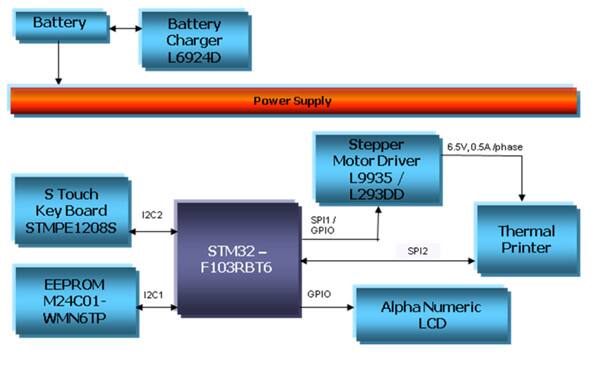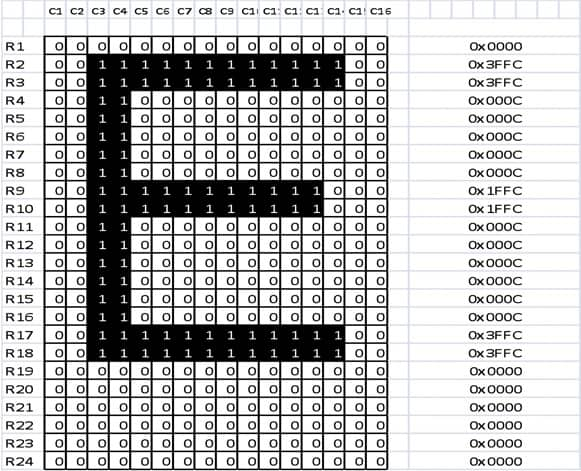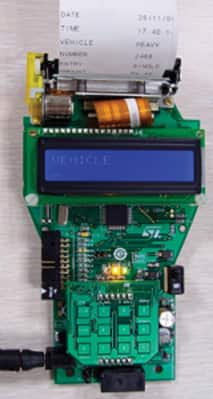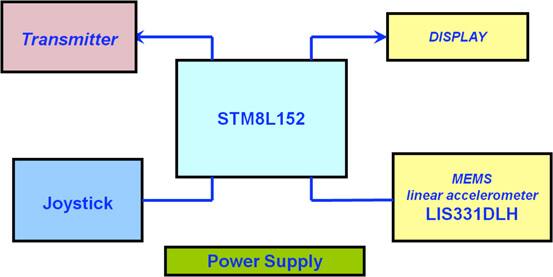New Generation Microcontroller Families
投稿人:Convergence Promotions LLC
2011-01-11
STMicroelectronics has come up with a new roadmap of microcontrollers on 8-bit and 32-bit MCUs. A key differentiating factor with ST MCUs is that they share common peripherals between both the families of 8- and 32-bit microcontrollers and share some common tools.
With the narrowing of the gap between 8-bit and 32-bit microcontrollers, designers are finding new flexibility on MCUs while choosing platforms. While 8-bit MCUs are here to stay for cost sensitive reasons and low to medium complex applications, 32-bit MCUs are gaining popularity on new applications. With the lowering of costs and increasing performance of 32-bit MCUs, it is further accelerating their demand.
STMicroelectronics has come up with a new roadmap of microcontrollers on 8-bit and 32-bit MCUs. Our STM32 MCUs are based on the popular Cortex-M3 core, and today we offer a very wide range of products. On 8-bit, our STM8 devices meet the need of high performance with code compactness and high efficiency by offering a combination of Harvard and CISC architectures.
With a wide range of MCUs in STMicroelectronics' portfolio, it becomes easy for developers to choose a platform based on their application requirements. The key differentiating factor with STMicroelectronics MCUs is that they share common peripherals between both the families of 8- and 32-bit microcontrollers. In addition, the two families share some common tools. Thus, the investments on the know-how and tools are minimized and newer designs can come much faster in the market.
STMicroelectronics has many reference designs available on STM32 and STM8 MCUs to support its customers to achieve faster time-to-market. One such application is the ‘Standalone Thermal Printer' used in many applications today, such as parking ticket vending machines, point of sales terminals, etc., and based on STM32 and wireless remotes integrated with MEMS based on STM8.
32-bit microcontrollers from STMicroelectronics
The STM32 family of 32-bit flash microcontrollers is based on the breakthrough ARM Cortex-M3 core — a core specifically developed for embedded applications. The STM32 family benefits from the Cortex-M3 architectural enhancements, including the Thumb-2 instruction set to deliver improved performance with better code density, significantly faster response to interrupts, all combined with industry leading power consumption.
The STM32 family is built to offer new degrees of freedom to MCU users. It offers a complete 32-bit product range that combines high-performance, real-time, low-power and low-voltage operation, while maintaining full integration and ease of development. Compatibility of pin-assignments, peripherals, and software across all STM32 devices is a core technical feature throughout this family of microcontrollers.
The STM32 family is further divided into three categories: STM32F, STM32L and STM32W.
The STM32F is the foundation of the STM32 family. It provides perfectly balanced products for applications that do not require extreme low-power. They combine high performance with first-class peripherals and low-power, low-voltage operation. The STM32F products target a wide range of applications in the industrial, medical and consumer markets.
The STM32L MCU family, extends the ultra-low-power portfolio in performance, features, memory size and package pin count. The STM32L family combines very high performance and ultra-low-power consumption, as a result of our proprietary ultra-low leakage process and optimized architecture.
The STM32W is the wireless member of the STM32 family and brings outstanding radio and low-power microcontroller performances. With a configurable total link budget up to 109 dB and the efficiency of the ARM Cortex-M3 core, the STM32W is a perfect fit for the wireless sensor network market. Compliant with the IEEE 802.15.4 radio standard, this open and flexible platform supports the most popular protocol stacks such as RF4CE, ZigBee-PRO, 6LoWPAN and more.
In addition to the above three broad families, STMicroelectronics has the resistive multi-touch controller (STM32TS60) that detects and tracks ten simultaneous touches with very fast response times while keeping an unrivaled power budget in active and sleep modes. This single-chip solution allows application designers to replace complex menu sequences with more direct and natural user controls using fingers, nails, or stylus. The STM32TS60 benefits from the highly efficient STM32 microcontroller architecture and a patented, multi-touch embedded firmware. This greatly reduces the application development cycle and the external component count.
8-bit microcontrollers from STMicroelectronics
STMicroelectronics has a new 8-bit microcontroller platform designed to offer outstanding levels of performance and cost-effectiveness in a wide range of applications. Implemented around a high performance 8-bit core and a state-of-the-art set of peripherals, the STM8 platform is manufactured using an ST-proprietary 130nm embedded non-volatile memory technology.
STMicroelectronics' STM8S family of general-purpose 8-bit flash microcontrollers offers ideal solutions for industrial and appliance market requirements. The true embedded EEPROM and the calibrated RC oscillator bring significant cost effectiveness to the majority of applications. An easy-touse and intuitive development environment contributes to improving time-to-market.
STMicroelectronics has introduced its first ultra-low-power family based on the 8-bit STM8 core, called STM8L. Paving the way for a future complete ultra-low-power platform, the STM8L family combines high performance and ultra-low-power consumption thanks to a new proprietary ultra-low-leakage process and optimized architecture.
In addition, STMicroelectronics' STM8T141 ultra-low-power touch controller is a single-channel 8-pin capacitive sensor for human-touch or short-range proximity detection microcontroller. The STM8T141 uses the field-proven and robust charge transfer capacitive technology to detect human presence or absence. It measures human body capacitance near an electrode (usually made with a copper pad) behind a dielectric such as glass or acrylic panel.
The STM8T141's performance and extremely low consumption and extremely small footprint give designers a highly versatile approach to the application. As well as replacing traditional mechanical switches, the device can serve to automatically start music when the headset is detected on the user's head, or simply wake up a PC mouse when the user approaches or put it to standby when the user leaves.
Thermal printer interfacing with STM32F
Thermal printers are standalone, compact modules that can be interfaced with microcontrollers like STM32, which can directly manage the printing operations. The thermal printer has a built-in stepper motor for thermal paper feeding, paper movement, etc. The stepper motor controlling is done using a dedicated stepper-motor driver.
The main building blocks for driving a standalone thermal printer module are:
- STM32 Microcontroller
- Stepper motor driver
The thermal printer is interfaced with STM32 using SPI (SPI2 in Figure 1). Printing data is transferred to the printer through serial data-in pin available on the printer. Strobe signals of the printer are directly controlled by STM32 using GPIOs.
 |
| Figure 1: Block Diagram for interfacing thermal printer with STM32. |
Making the call
Printing on thermal paper is done by rolling paper over the thermal head of the printer. Then specific heat elements on the thermal head are heated up by command. A black dot appeared on the paper corresponding to the position of the heat element.
The printing principle can be well described by citing some examples.
Let's say each character to be printed is 16 dots x 24 dots in size. That is, each character is 16 dots wide and 24 dots in height. So, we have 384 dots for printing 1 character. One dot is equivalent to one bit of data:
| 1 dot = 1 bit |
 |
| Figure 2: Generating a letter "E." |
 |
| Figure 3: Parking ticket vending machine on STM32F103RBT6. |
There are several other applications and prototypes available based on STM32. A point of sale (POS) application that uses the thermal printer, as above, is one example. A database in the computer with the bar-coded inventory information is synchronized by the administrator and the hand-held POS terminal is assigned to different sales persons. By the end of the day or the specified period, all information related to sales and cash is available to the administrator when the POS terminal is re-synchronized.
Wireless remote based on STM8L
An application that captures user gestures has been implemented using STM8L and MEMS accelerometers. It is powered by battery and is made in the form factor that it can be tied to the hand. The accelerometer captures the motion of the hand and this is processed by the STM8L microcontroller. A local display is used to display the information received either from the joysticks or the MEMS and the same information is wirelessly transmitted using OOK (ON-OFF Keying) scheme with an available wireless transmitter.
 |
| Figure 4: STM8L and MEMS based remote control. |
This remote has been used to control the motion of a prototype toy vehicle and can be customized easily to map any kind of applications that may need to use gesture control. It is already used in the segments like toys, consumer applications like remotes and gaming.

免责声明:各个作者和/或论坛参与者在本网站发表的观点、看法和意见不代表 DigiKey 的观点、看法和意见,也不代表 DigiKey 官方政策。









 中国
中国